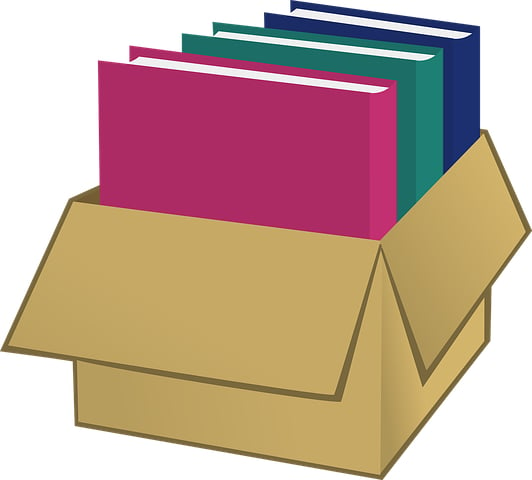Organizing the CDA Professional Portfolio
 The CDA (Child Development Associate) professional portfolio is crucial for several reasons:
The CDA (Child Development Associate) professional portfolio is crucial for several reasons:
Demonstrates Competency and Preparation
The portfolio is a key part of the CDA assessment process, showing that you have the knowledge, skills, and dedication needed for high-quality #early-childhood-education. It provides a tangible way for evaluators to assess your competencies.
Reflects Your Professionalism
By organizing and presenting your work in a professional portfolio, you showcase your commitment to the field, attention to detail, and pride in your profession. It signals to employers or evaluators that you take your role seriously.
Personalizes Your Learning and Growth
Creating the portfolio involves reflecting on your experiences and writing competency statements, which help you recognize your strengths and areas for #growth. This reflective process can be personally rewarding and foster professional #development.
Meets Credentialing Requirements
For CDA certification, you’re required to submit a portfolio that includes documentation, family questionnaires, competency statements, and resource collections. Without this portfolio, you won’t fulfill the certification requirements.
Serves as a Long-Term Professional Resource
Your portfolio can become a living document you update over time. It can be useful during job applications, performance reviews, or other professional milestones to demonstrate your experience and accomplishments.
Supports Interview Readiness
Having a well-organized portfolio gives you specific examples and materials to discuss during interviews or assessments. It can help you articulate your philosophy, teaching methods, and knowledge with confidence.
In short, the CDA professional portfolio is more than just a requirement; it’s a valuable tool for both your personal development and professional success in #early-childhood education.
Here are some ideas to help you organize your CDA professional portfolio effectively:
- Create a Table of Contents: Start with a clear and concise table of contents to guide reviewers. Number each section and make it easy to locate each component.
- Use Dividers or Tabs for Each Section: Divide the portfolio into required sections: Family Questionnaires, Reflective Competency Statements, the Professional Philosophy Statement, Resource Collection, and any other CDA-specific categories. Use color-coded tabs or labeled dividers for easy navigation.
- Label Each Item Clearly: Make sure each item in the portfolio has a clear title and is labeled with the required CDA competency area. Labeling helps reviewers identify that each requirement is met.
- Include a Cover Page for Each Section: Use a cover page to introduce each section. This can include a brief summary of what’s included and how it meets the CDA requirements.
- Add Reflection Pages: Add a reflection page for each competency statement, where you reflect on your growth, learning, and future goals. This helps personalize the portfolio and demonstrates your dedication to child development.
- Include Visuals and Artifacts: Add photos, #lesson-plans, or sample activities (with privacy considerations) to make the portfolio engaging and to showcase your hands-on experience.
- Keep It Professional and Clean: Use a simple, professional font and design throughout. Avoid clutter, and make sure all pages are aligned and neatly presented.
- Use a Sturdy Binder or Portfolio Case: Use a high-quality, sturdy binder or portfolio case to keep everything #safe and organized. Choose a format that opens flat for easy viewing.
- Include a Personal Introduction: Start with a brief personal statement about your journey in early childhood education and what motivates you in the field. It provides a human touch and insight into your passion.
- Check for Completeness and Accuracy: Double-check each component against the CDA requirements to ensure all materials are included, labeled correctly, and meet the guidelines.
Each step will help ensure that your portfolio is organized, professional, and reflective of your dedication and skills in child development.
- Everything You Need to Know About the CDA Exam and How to Prepare
- CDA Portfolio Checklist: A Guide for CDA Candidates
- Building Your CDA Professional Portfolio: Understanding the Cover Sheet
- Organizing the CDA Professional Portfolio
- How to Build a Winning Professional Portfolio for Your CDA Certification
- Where to Find the Forms Needed for Your CDA Professional Portfolio
- Enhancing Your CDA Credential Journey: Mastering the Competency Standards
- Building a Strong Professional Portfolio for Your CDA Credential
- Building Your CDA Professional Portfolio
- Why CDACertification.com is Your Ultimate Destination for CDA Training
- How to Earn Your CDA in Oregon
- 🎰From the Strip to the Sandbox: How to Earn Your CDA in Nevada
- 📁Binders, Brilliance & Bright Ideas: What Is a CDA Portfolio, Anyway?
- 🎓From Garden State to Greatness: How to Earn Your CDA in New Jersey!
- Planting the Seeds of Success: How to Build a Resume That Grows with Your CDA Credential
- Why the CDA Is More Than a Credential — It’s a Mirror
- 🎓 The “Aha!” Moments That Make All the CDA Stress Worth It